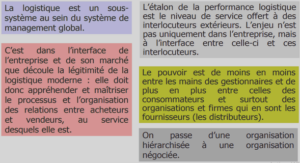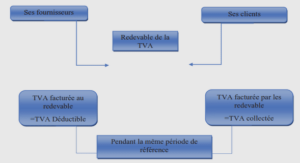Bacterial Respiration and Production Aquatic
BR is a mechanism through which organisms link substrate oxidation (e.g. of glucose) with an electron acceptor, such as oxygen, to produce an en erg y source, i.e. ATP. The sum ofthese processes is the consumption ofa substrate and oxygen to produce C02, water, and energy. The energy produced from this reaction is used for cell maintenance and basic functions. Compared to other functions, BR is less energy intensive, allowing bacteria to allocate more recalcitrant organic matter for this mechanism (Lennon & Cottingham, 2008). Byproducts of BR (i.e. C02) are released into the surrounding environment and are transported downstream or escape into the atmosphere. Depending on the substrates available and conditions within the environment, BR can be responsible for a considerable portion of C02 released into the environment. In sorne systems, rates of BR are much higher than algal carbon fixation, leading to net production of C02, i.e. creating a heterotrophic system (Cole & Caraco, 2001; Hessen, 1992). In other ecosystems, primary production (e.g. phytoplankton photosynthesis) is higher than BR, producing an ex cess of 0 2, making the system autotrophic (Dodds & Cole, 2007; S. Findlay et al., 1991). BP, another facet of bacterial metabolism, is the amount of bacterial biomass produced per unit time (Kirchman, 2001 ; Kritzberg et al., 2004). Unlike BR, which releases inorganic carbon into the system, BP transforms organic carbon substrates into biomass that may be utilized by other organisms (e.g. heterotrophic phytoplankton and zooplankton) (Faithfull et al., 20 Il ; Hessen, 1992; Lennon & Pfaff, 2005). The novel compounds produced by BP supply the base of food webs with energy, allowing bacteria to act as an important source of transformed organic materials (Fasching et al., 2014; Findlay et al., 1991; Kritzberg et al., 2004).
Dissolved Organic Carbon Of the DOM entering aquatic systems, dissolved organic carbon (DOC) makes up a significant portion (~ 50%) . This carbon not only plays an important part of the global carbon cycle, but it can also influence pH (through the input of humic acids), decrease water clarity (as it absorbs light), and regulate bacterial metabolism (where it acts as a primary substrate) (Spencer et al., 2016). In freshwater systems, there are two main sources of DOC: locally produced (autochthonous) carbon and carbon imported from the surrounding landscape (allochthonous). Each type possesses unique characteristics and interacts differently with the surrounding environment. Autochthonous DOC is produced through phytoplankton photosynthesis, autotrophic and heterotrophic bacteria, and macrophyte activity (Lapierre & Frenette, 2009). This pool of DOC tends to be less complex and more bioavailable. In sorne environments, highly labile autochthonous carbon can be degraded by more than 60% in a few days (Nguyen et al., 2005). Allochthonous DOC, on the other hand, cornes from terrestrial sources (e.g. soils and plant litter), has a more complex structure, and is often more persistent in aquatic systems (Berggren & dei Giorgio, 2015; Wilson & Xenopoulos, 2008). Due to the size of terrestrial watersheds compared to freshwater systems, inputs of allochthonous carbon tend to be much larger compared to autochthonous sources (Cole & Caraco, 2001).
Previously, allochthonous carbon was thought to be much less available for bacterial utilization, but recent studies demonstrate that a small fraction of the allochthonous carbon pool is readily consumed by bacteria (Guillemette et al., 2013; Lennon & Pfaff, 2005; Ward et al., 2013). Because the pool of terrestrial carbon is greater than the autochthonous one, this small portion of labile terrestrial carbon could be an importance source of carbon preferentially consumed by aquatic bacteria (Guillemette et al., 2013). Within allochthonous and autochthonous DOC pools, the composition of carbon is crucial for understanding the bioavailability and persistence of materials within the ecosystem. Although the proportions of each source vary, both DOC pools are composed of a mixture of aliphatic and aromatic compounds (Stedmon et al., 2003). Aromatic DOC is composed of complex aromatic ring structures that are very stable (Kalbitz et al., 2003). Due to this complexity, it takes more energy for aromatic compounds to be broken up, making it hard for bacteria to utilize them (Fellman et al., 2008). In order to become more bioavailable, these compounds can be broken down through mechanisms such as photo, chemical, and/or physical processing (Kalbitz et al., 2003). Aliphatic compounds, however, are simpler structures of carbon that do not contain aromatic rings and tend to be more bioavailable. While they can also be cyc1ical, these compounds are lighter and smaller. Thus, they are more labile and need less processing before they can be utilized by bacteria (D’Andrilli et al., 2015 ; Sun et al., 1997). Since it takes less energy to consume these compounds, bacteria selectively utilize aliphatic DOC for processes su ch as BP (Sun et al., 1997).
DOM, Nutrients, and8acterial Metabolism
Changes in source and composition of DOM significantly influence bacterial activity within aquatic systems. Inputs ofbioavailable carbon are preferentially consumed by bacteria, leaving the recalcitrant material to flow downstream (Guillemette et al., 2013). Labile, autochthonous carbon has been shown to be consumed at rates up to 10 times higher than terrestrial pools of carbon (Guillemette et al., 2013), but the allocation this carbon is not equal between BR and BP. While BR can be supported by aromatic terres trial carbon, BP is more tightly associated with autochthonous carbon (Berggren et al., 2007; Kamjunke et al., 2015; Kritzberg et al., 2004). Because BP is a higher energy function compared to BR, it requires a larger proportion oflabile and energy-rich materials (Lennon & Cottingham, 2008). Similarly, systems with higher amounts of autochthonous compounds often contain higher BGEs, above or around 0.4 (i .e. more efficient). Allochthonous carbon pools, on the other hand, are more strongly correlated with lower BGEs, around 0.1 or less (i.e. less efficient) (Berggren & dei Giorgio, 2015 ; Fasching et al., 2014). While this correlation between BP and BGE and autochthonous carbon is widely accepted by freshwater scientists, recent studies suggest that there is a small pool of high efficiency terrestrial carbon that can be readily allocated for BP (Berggren & dei Giorgio, 2015; Fasching et al. , 2014; Guillemette et al., 2016).
On a narrow scale, specific changes in carbon substrates within the DOC pool can also influence BCC and BGE. Varying amounts of carbohydrates (CH), amino acids (AA), and carboxylic acids (CA) within natural systems have been shown to control BGE, suggesting that metabolism is affected by the availability of certain carbon substrates (Berggren et al., 2010). In one study, CA and CH from allochthonous inputs supported 30% of the annual bacterial carbon demand (Jansson et al. , 2007). In another study, different proportions of CH, AA, and CA compounds were shown to cause variations in BGE (Berggren et al., 2010). Tracking the metabolic capacities of bacteria to utilize these carbon substrates provides additional information regarding carbon availability within ecosystems. One study, comparing bacterial metabolism and bacterioplankton community structure between a variety of ecosystems found that bacterial metabolic capacity was able to link bacterial carbon consumption with changes in resources and habitats (Comte and deI Giorgio, 2009). While there is limited research on the connection between carbon substrates, bacterial metabolic capacities, and bacterial metabolism, an increased understanding of this relationship can help to develop predictive models of how bacterial metabolism could be influenced by natural and anthropogenic land changes (i.e. changes in carbon compounds).
Conceptualizing
Rivers within the Environment Due to their unique structure and relatively sm ail width, rivers receive a sizable volume of terrestrially derived DOM (Raymond et al., 2004). The Mississippi River, for instance, makes up a sm ail proportion of the United states, yet drains approximately 40% of the continent within its watershed and accounts for almost 65% of ail suspended and dissolved materials entering the oceans from the United States (Dagg et al., 2004). Despite the large load of materials entering rivers, this DOM does not accumulate within oceans (Cole & Caraco, 2001). Instead, rivers act not only as a pipe transporting DOM but also as a reactor, with over three times more terrestrial organic matter decomposing within rivers than is exported by ri vers to the ocean (Cole & Caraco, 2001; dei Giorgio & Pace, 2008). Pro cesses, such as photo, chemical, and bacterial degradation, transform complex terrestrially derived materials into smaller compounds. For decades, scientists have tried to make predictions about the functioning capabilities of ri vers by developing conceptualizations of fluvial systems. The River Continuum Concept (RCC), one of the earlier river concepts, argues that rivers are highly connected longitudinally, with downstream sections of the river relying heavily on upstream processing (Sedell et al., 1989; Van note et al., 1980). This concept states that as you go downstream, river size increases, and the pool of DOM becomes less connected to headwater streams and terrestrial environments.
Processing and autochthonous carbon production via bacterial metabolism, phytoplankton, and aquatic plants increase downstream, shifting the pool of carbon to progressively sm aller compounds (Berggren et al., 2009). In response to the changing carbon pool, bacterial communities downstream are adapted to smaller particulate matter compared to the bacteria upstream (Vannote et al., 1980). Creed et al. (2015) builds upon this idea, arguing that as stream order increases, there is less influence from the catchment and an increase in homogenization due to selective removed of materials. The River Discontinuity Concept, however, argues that rivers are mosaics of « discontinuities », each with unique characteristics (Sedell et al., 1989). In this concept, abrupt changes within the landscape and riverscape pro duce distinct units that are geomorphically and biotically independent from the other river units. Each section of the river contains individualized ecosystems with different pools of materials and processing abilities (Sedell et al., 1989). The third concept is a Refined River Continuum Concept which states that, while there is a continuum between the upstream and downstream sections of rivers, there are also riverine units and inputs that are biogeochemically significant as well (Houser et al., 2015; Minshall et al., 1985).
Acknowledgements |






